 Melinda Steffy and Gerard Brown, Sketch for The Hours, 2014, colored pencil on paper.
Melinda Steffy and Gerard Brown, Sketch for The Hours, 2014, colored pencil on paper.
The Text for Translation
Written by Jane Irish
“The task of the translator consists in finding that intended effect upon the language into which he is translating which produces the echo of the original.”—Walter Benjamin, The Task of the Translator, 1923 (translated by Harry Zohn)
Prelude:
I am an artist writing this essay. In my work, I try to practice openness, to travel eagerly through territories of another’s culture. By painting about Vietnam, France, and the United States resistance histories, I practice to rectify the problem with European-based training of art history and history in general. Looking at Brown and Steffy’s work takes me to some stories that I often repeat. They are my core experiences with translation.
I. Counterpoint
In 2008, I traveled for my first time to Vietnam. I was inspired by John Balaban’s Remembering Heaven’s Face and reading his poetry and his translations of Ca Dao Vietnamase folk poetry. Just after, I saw him speak in Philadelphia. He was in his 60s. Some people are connectors, and John is one of these. He is highly thought of, a sage, someone who has stuck with his subject matter.
I have looked up to him. In 1994, nearly 15 years before meeting John, Linh Dinh was another person I looked up to. He was a young poet and painter living in Philadelphia; he was rough-talking and tough on his feet. I had him to my studio long before I started on a Vietnam narrative. He liked my paintings that day in my studio; he thought I had moxie.
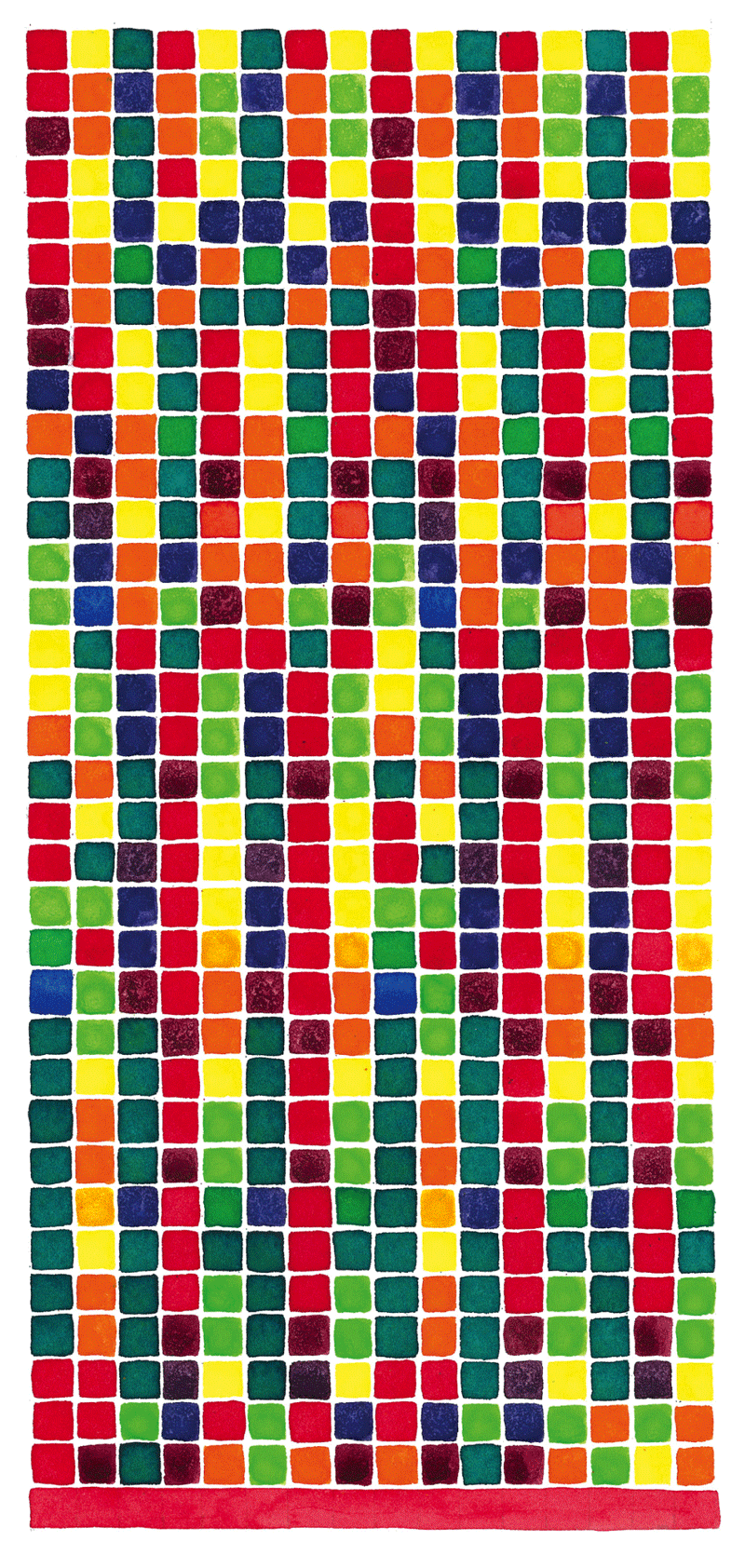 Melinda Steffy, Prelude in C Major (red), No. 1, 2013, watercolor on paper, based on music by J.S. Bach.
Melinda Steffy, Prelude in C Major (red), No. 1, 2013, watercolor on paper, based on music by J.S. Bach.
Both of these idols of mine went on to translate the poems of Vietnam’s favorite poet, Hồ Xuân Hương. John was a conscientious objector during the Vietnam War but served in Vietnam with the Friends International Volunteer Services, first as a teacher, then saving burned children. Linh Dinh was born in Saigon in 1963 and in 1975 came to the U.S.
In 2010, I was visiting John Balaban in North Carolina. I had come to learn from the sage and to deliver a gift to him—a vase I had made with the collected Ca Dao poetry. When I arrived he was wearing a heart monitor, as he was in the midst of tests for a serious heart condition. I spent the evening learning about his days studying Mekong folk culture, his continued alliances with activists, and about Hồ Xuân Hương. The next morning, I learned how utterly emotional
the competition can become between translators. I mentioned Linh Dinh at the kitchen table and John flew into rage, heart monitor bleeping. They were both in the midst of working on the translating the same 18th century Vietnamese poetess. Returning home, I saw on many literature blogs that an ongoing insult fest was in high gear.
 Melinda Steffy, Parallel Motion, No. 11, 2014, based on music by Béla Bartók.
Melinda Steffy, Parallel Motion, No. 11, 2014, based on music by Béla Bartók.
II. Dissonance
There are three artists I visit in Hue, Vietnam: two twins (the Le Brothers, born in 1975 in Bình Trị Thiên) and one printmaker. They pick me up or have a student pick me up, and I ride on the back of a motorbike to a curatorial camp for a discussion of communist post modernism on a reclaimed French plantation. Or they send me on a boat trip up the Perfume River with a calligrapher and his family (wife, brother with Agent Orange disfigurement, father, grandfather, and student). In 2012, artist Phan Hai Bang invited me to work in his printmaking and bamboo papermaking studio in Hue, Vietnam. This was my third trip. On the first I had mused on finding motifs in dissident Vietnam Veterans’ literature. Then I traveled the poetry of Hồ Xuân Hương. Now I was intent on replacing right-wing myths with nuances. I was into serious iconography, combining images of monks and anti- war veterans, signifying a combination of spirituality and post traumatic stress disorder. The young artists working with Phan and me said, “You are killing he said, “a score!” His closest aesthetic hero/col-the monks,” which they found very funny.
III. Notation, with alertness after speaking with Gerard Brown and Melinda Steffy David Stearns and I were to go to the orchestra. He is a classical music critic. That evening we met for dinner, and later quickly stepped into his apartment so he could retrieve a Brahms score. His parlor had dim light, lots of upholstery and lamps, very French bohemian. As my eyes adjusted, what appeared to be floor-to-ceiling bookcases on three walls of the room became a multicolored grid of a smaller scale, made of thousands of CDs of classical music. I still want to paint that room.
David grabbed a large folio of sheet music from the back room and we walked to the Kimmel Center. In the dark of the theatre, he followed the large-scale score and wrote notes on his playbill. Soon after, David told me, “the score, it’s a blueprint.”Just now, I chat with my office neighbor at Penn, Bill Whitaker at the Architectural Archives. I asked him what a blueprint was, and no backstory given,he said, “a score!” His closest aesthetic hero/colleague, the landscape architect Lawrence Halprin, was solid on this idea—that a blueprint was time-based. “One doesn’t see a building or a garden like a photograph,” Bill said, “the architect’s blue drawing tells us the process by traveling through it.”
Coda: In visual art, knowing the backstory isn’t really necessary, it is more important to be completely present. But Brown and Steffy’s work embody a process supporting our journey; we can see how conceptualism is a way to travel through painting.
Jane Irish. A self-described history painter, Jane Irish has been making work on the theme of heroic resistance movements since 1998, building on her interest in using art to explore the concepts of social class and political art. She has exhibited her work in NewYork and Philadelphia since 1983. The recipient of many awards and fellowships, she received her BFA from the Maryland Institute College of Art and her MFA from Queens College, CUNY.
 Gerard Brown, After Edith Wharton (In reality they all lived in a kind of hieroglyphic world…), 2015, Digital print on Dibond.
Gerard Brown, After Edith Wharton (In reality they all lived in a kind of hieroglyphic world…), 2015, Digital print on Dibond.
About the Exhibition
‘Chromography’ examines the relationship between graphic communication and sound. Writing is an ancient and elegant system of recording the human voice, and it has spawned other systems for the notation of music and movement. Most of these systems are so successful they seem to achieve invisibility – we can imagine the ‘voice’ of the writer when we read a page, or ‘hear’ the music described in a score. The system of representation disappears into the thing being represented. The authority of these systems is unchallenged; it rests on communicating their messages ‘in black and white’.
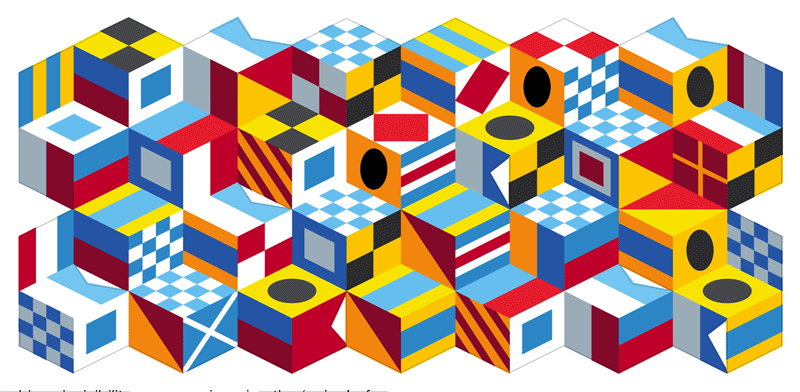 Gerard Brown, After Robert Smithson (Language should find itself in the physical world…), 2015, Digital print on Dibond.
Gerard Brown, After Robert Smithson (Language should find itself in the physical world…), 2015, Digital print on Dibond.
‘Chromography’ insists on a place for color in the description of sound and music. This complicates the relationship between seeing and reading because colors bring associations along with them. Are they bright or dull? Warm or cool? In sunshine or shade? What does it mean that a piece of music is composed mostly reds, oranges and yellows?
What do we see when the letters are switched with color symbols? Could such changes reveal patterns that tell us something new about communication? Translation scholar Lawrence Venuti argues that the translator’s invisibility results in important decisions being hidden from view. By pushing back against the conventions of writing and musical notation and exploring the space that such actions open, we hope to learn more about the content we represent.
 Gerard Brown, After Judith Butler (An active and sensate democracy requires that we learn how to read well…), 2015, four screen prints on paper
Gerard Brown, After Judith Butler (An active and sensate democracy requires that we learn how to read well…), 2015, four screen prints on paper
About the Artists
Gerard Brown, a writer and painter, is an Assistant Professor at Temple University’s Tyler School of Art. His work explores how the mind moves from seeing to reading by concealing writing in patterns and color. His paintings and drawings have been exhibited at the Woodmere Art Museum, Tiger Strikes Asteroid, Painted Bride Art Center, Philadelphia Sculpture Gym, and the Icebox (all in Philadelphia), as well as Finlandia University Art Gallery (Michigan) and 5.4.7 Art Center (Kansas). He has also organized exhibits for the Center for Art in Wood (Philadelphia) and Hicks Art Center at Bucks County Community College.
Melinda Steffy, a visual artist and classically-trained musician from Philadelphia, has had artwork displayed across the Northeast and beyond, including the Icebox, the Hall at the Crane Arts Building, and Sam Quinn Gallery (Philadelphia); Delaware Center for Contemporary Art and Fringe Wilmington (Delaware); Lancaster Museum of Art and Villanova University (Pennsylvania); Finlandia University (Michigan); Micro Museum (New York); and Stamford Art Association (Connecticut). She is an artist member of InLiquid and a LEADERSHIP Philadelphia fellow. An accomplished musician, Steffy currently serves as Executive Director for the innovative music non-profit LiveConnections and sings with the Chestnut Street Singers.
This program is made possible in part with funds from the New Jersey State Council on the Arts. Additional funding was provided by The Vice Provost for the Arts Grant from Temple University, Philadelphia. Rowan University Art Gallery Westby Hall Rowan University call 856-256-4521 or visit www.rowan.edu/artgallery
Thank you Mary Salvante and Jane Irish for the content of this post on DoNArTNeWs.
Mary Salvante is Curator, Gallery and Exhibitions Program Director Rowan University Art Gallery, 201 Mullica Hill Road, Westby Hall. Glassboro, NJ 08028
856.256.4521
salvante@rowan.edu
Rowan University Art Gallery is a premier cultural destination for the
Rowan University community and greater South Jersey region presenting the
work of professional contemporary artists.
Like Rowan University Art Gallery on facebook
@RowanUArtgallery on Twitter
Like DoNArTNeWs Philadelphia Art News Blog on facebook
Follow the new DoNArTNeWs.com
Follow DoN on Twitter @DoNNieBeat58
DoNArTNeWs on Tumblr
@donniebeat on Instagram
Affiliate Marketing [disclosure page] Shop on-line and help support DoNArTNeWs
Donate via safe and secure PayPal in the sidebar.


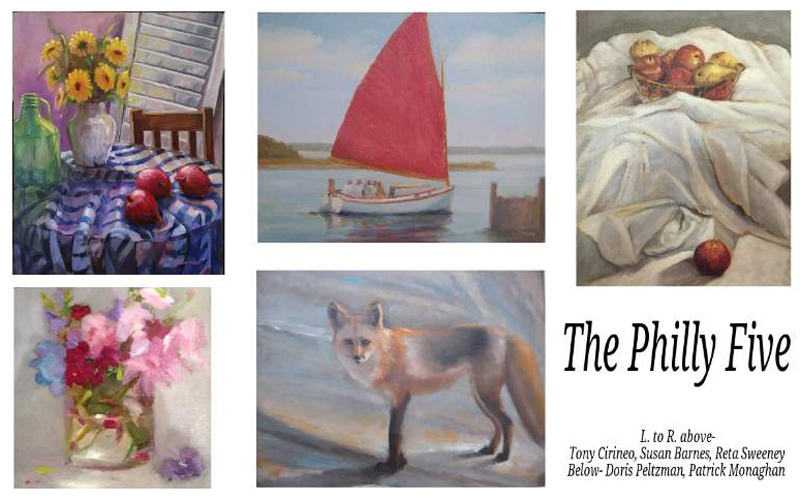

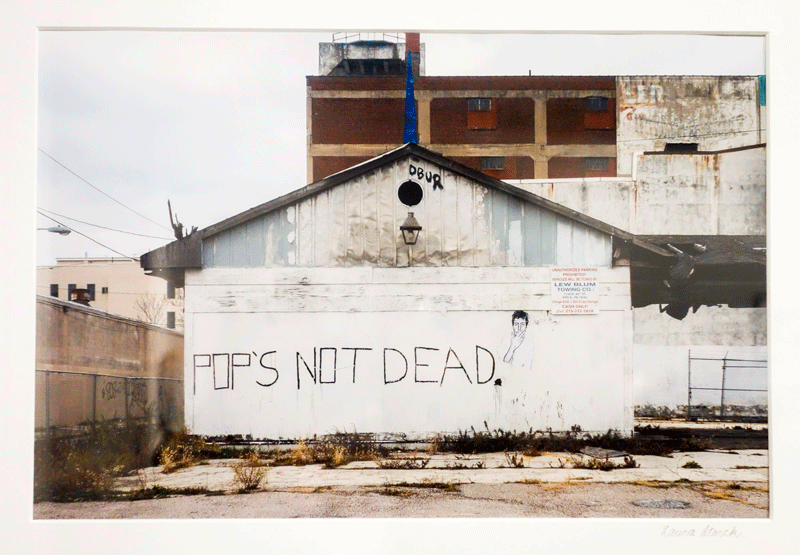
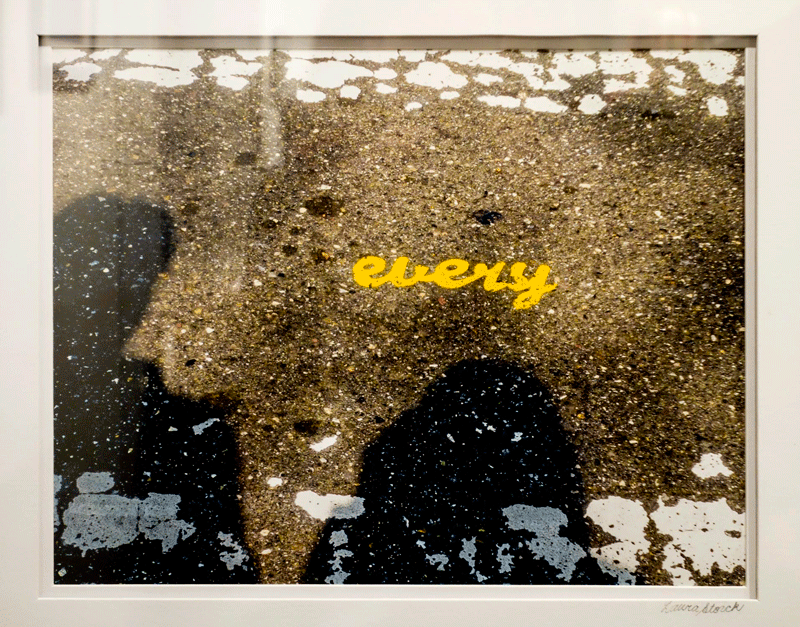 Every, Laura Storck
Every, Laura Storck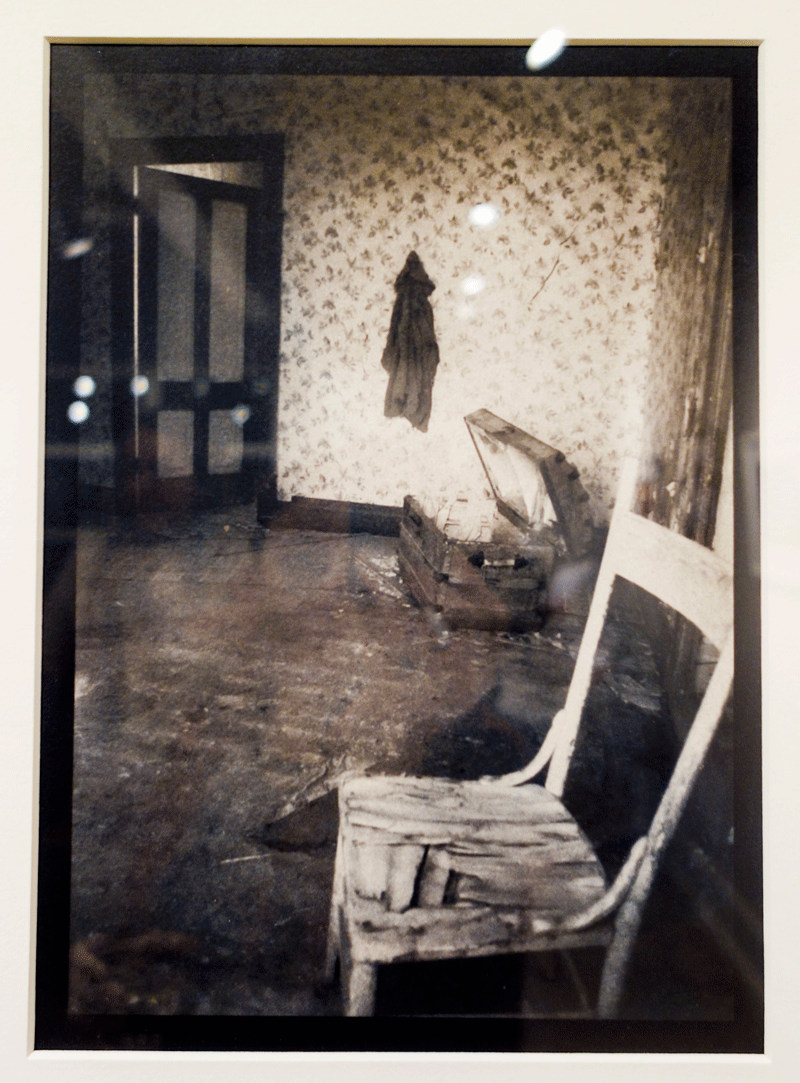 Steamer Trunk, Bodie, Sandra Davis
Steamer Trunk, Bodie, Sandra Davis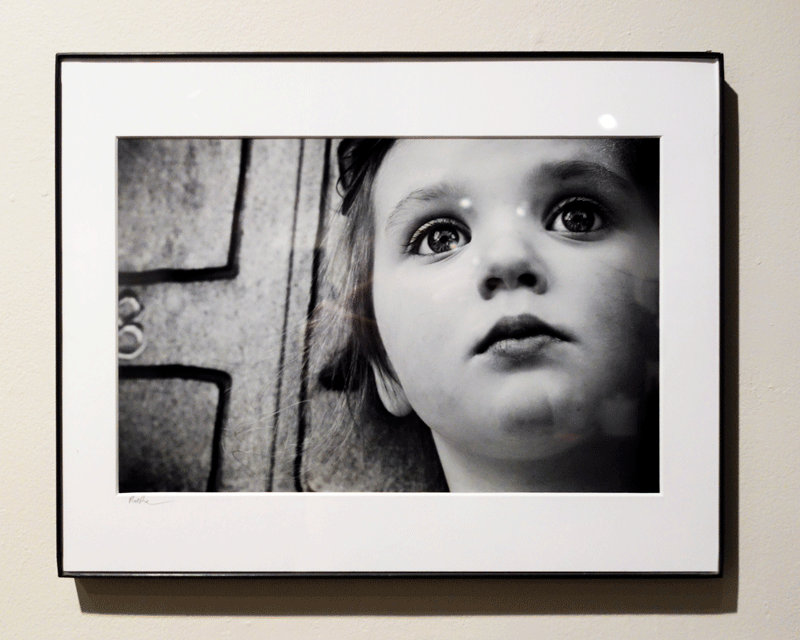 Grace, Patrick Rodio
Grace, Patrick Rodio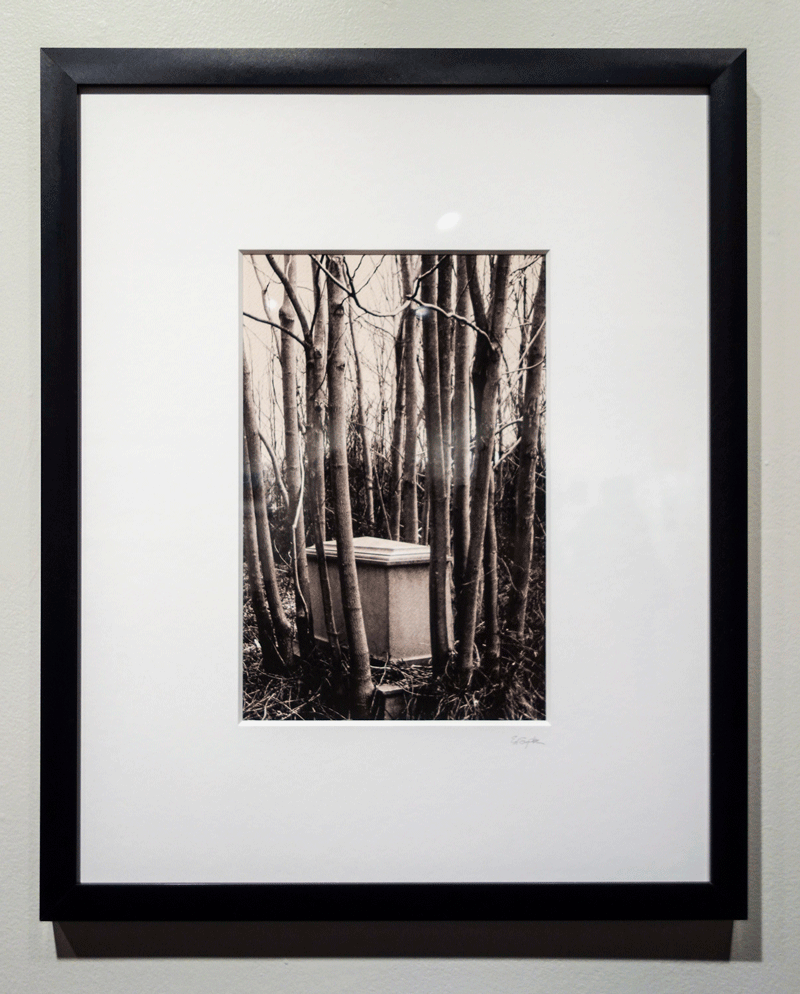 Crowded Crypt, Ed Snyder
Crowded Crypt, Ed Snyder Chemo Port, Wayne Klaw
Chemo Port, Wayne Klaw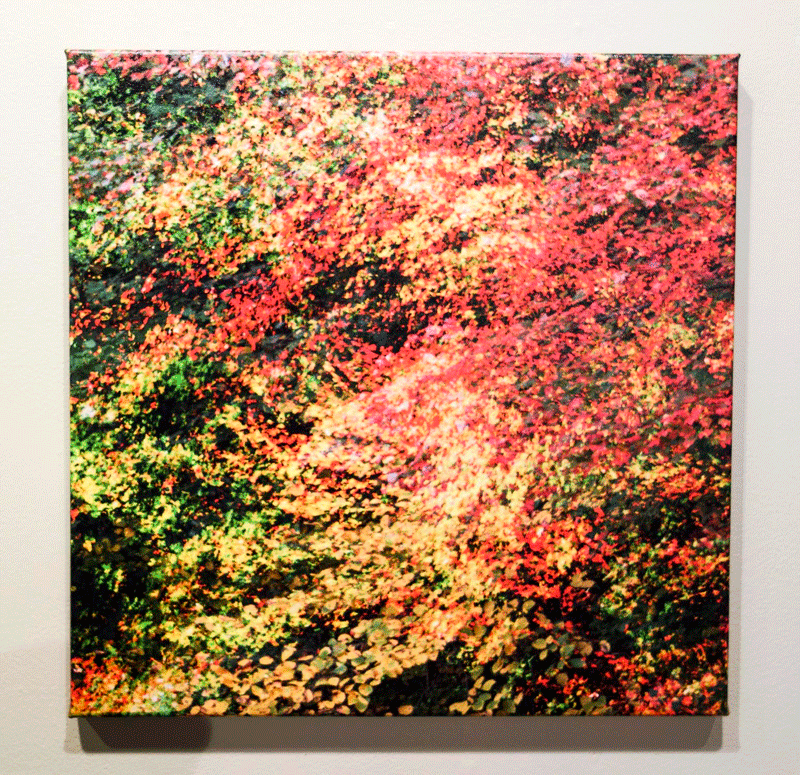 Autumn Colors, Marianne Leone
Autumn Colors, Marianne Leone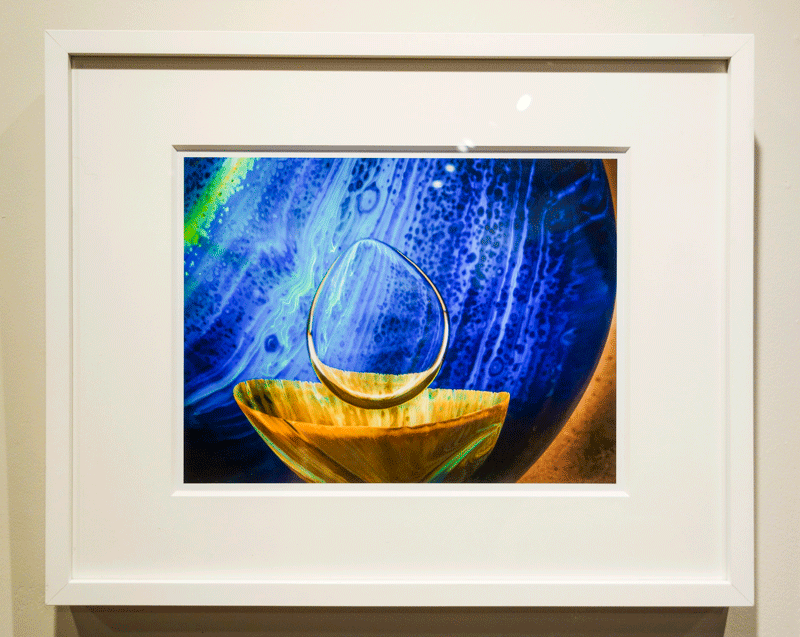
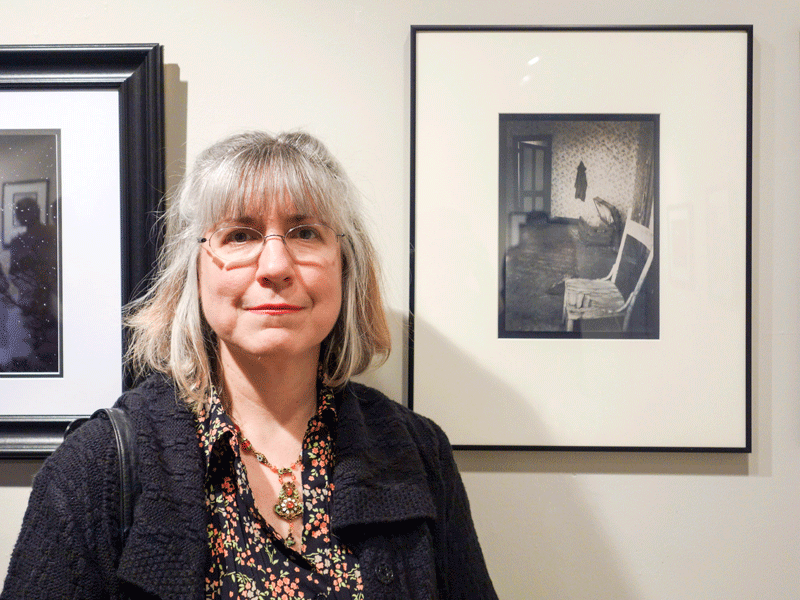 Sandra Davis with her photograph, Steamer Trunk, Bodie
Sandra Davis with her photograph, Steamer Trunk, Bodie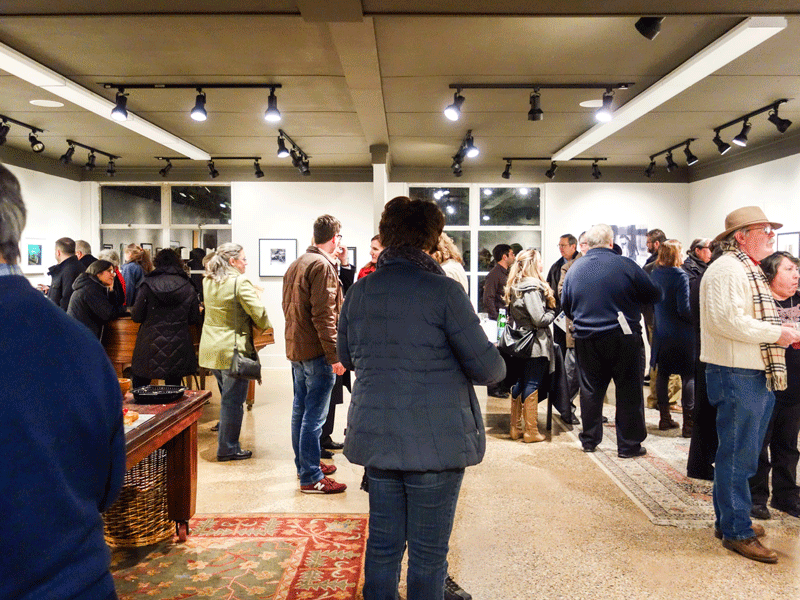 Patrons at Mysterious,
Patrons at Mysterious, 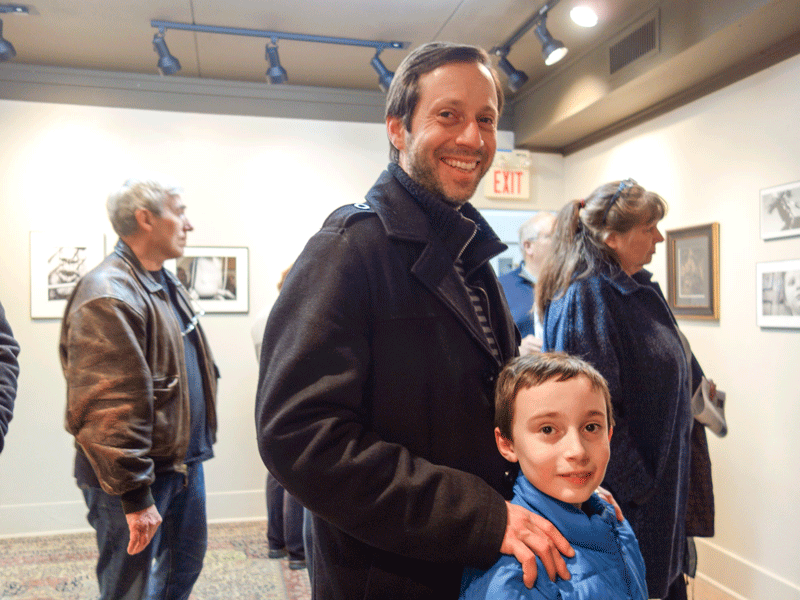 Patrons at Mysterious,
Patrons at Mysterious,  Executive Director Liz Madden of
Executive Director Liz Madden of